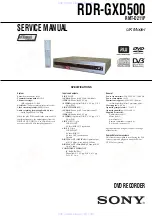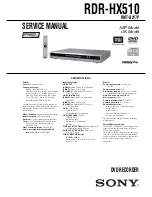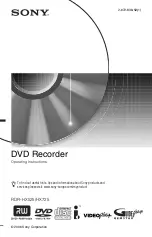
DS-D98 recorder
TASCAM DS-D98 -
7
PCM 16 bit
PCM 24 bit
DSD
When the DSD mode is selected, the blue
DSD
indicator
8
lights.
5
With the DSD option selected (the
DSD
indi-
cator is lit), start formatting the tape by hold-
ing down the
RECORD
key and pressing the
PLAY
key.
NOTE
The tape counter may show a negative ABS time for a
short while at the start of the formatting process. While it is
displaying a negative value, no audio recording can take
place.
The tape formats to the end, and then
rewinds automatically, stopping at the
00
00 00 00
position.
You are now able to use the tape for
recording.
Clock settings in DSD mode
When recording in DSD mode, take note of the fol-
lowing clock settings.
These settings are made using the
CLOCK
key, as
described in the DA-98HR manual (6.1.1, “Selecting
the word sync clock”).
NOTE
Note that in DSD mode, the AES/EBU digital audio con-
nectors are not used for audio I/O and cannot therefore
be used as clock sources.
Digital recording
When recording in DSD mode through the digital
BNC connectors, the appropriate clock indicator
should be lit (depending on the clock source to which
the unit is to be synchronized).
If WORD sync is used, the sampling frequency must
be 44.1kHz.
Analog recording
When recording in DSD mode through the balanced
analog connectors on the DSD board, with no refer-
ence to any other digital audio, the
SLOT
clock indi-
cator should be lit (that is, the A/D converters in the
DSD slot card act as the clock sync source). This
miminizes jitter.
In the case of the recording being synchronized to
other clock sources, the appropriate clock sources
should be selected as described in 6.1.1, “Selecting
the word sync clock”.
Additional DSD mode menus
There are two additional menu items which affect the
operation of the unit. Both of these are in menu group
D: DSD Digital I/O (
DsdDigiI/O
) and DSD
Analog Out Filter (
DsdFilter
).
DSD Digital I/O
In this menu item, the type of digital audio received
at the slot card’s digital input connectors and trans-
mitted from the output connectors can be selected:
Change this value between SDIF-3 format and “raw”
DSD data (
DSD Raw
) as appropriate.
The input and output formats are set together using
this screen.
Note that the raw DSD data may contain very low
frequencies which may cause artifacts in analog sig-
nals. SDIF-3 changes the tone by eliminating such
ultra-low components.
D S D
D i g i t a l
I / O
S D I F - 3






























